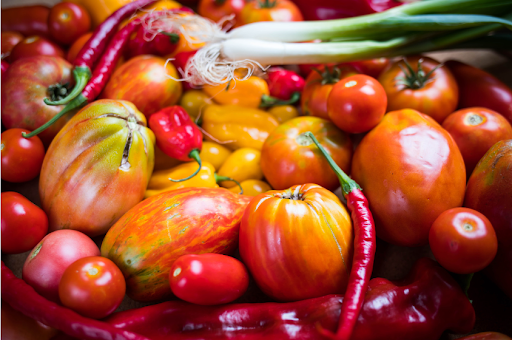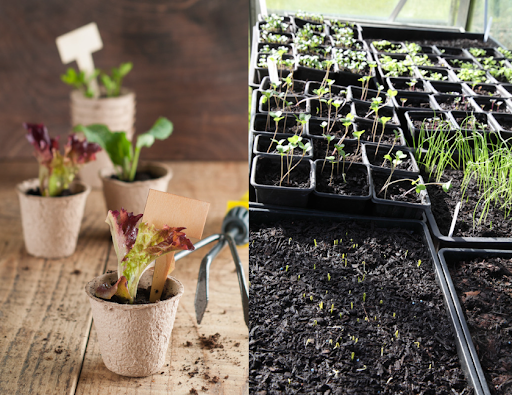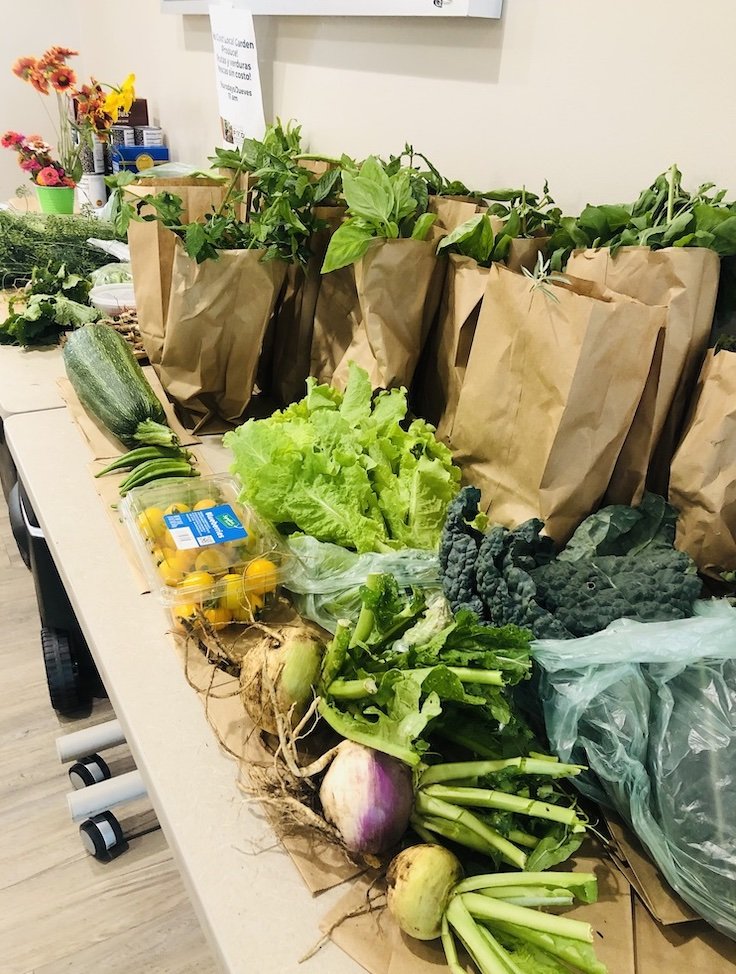Pro Tips on Crop Selection, Seed Starting, and Maintenance
Guest Contributor: Cassey Anderson, Horticulture Agent, Colorado State University Extension

Winter is the perfect time to start planning your vegetable garden for growing (and sharing your bounty)! There is a lot that can go into planning a vegetable garden, whether you’re particularly "Type A," or if you're the type who can set some general guidelines and flex through the season as needed. However, there are some important considerations to make for even the most laissez-faire gardener. We’ll go into crop selection, how you want to get started, and considerations for the general maintenance of the garden throughout the growing season.
Crop selection
What do you want to grow? It can be tricky sometimes to know what you want to grow if you’re starting out, but there are always some good standbys particularly when you’re growing with the intent to donate in mind. The top 5 requested fresh foods at Hunger Relief Organizations are:
1. Tomatoes
2. Peppers
3. Onions
4. Lettuce
5. Carrots
(Also check out this Fresh Food Connect article for more details: "What type of produce should I grow and donate?")
Of course, this does not mean that your greens, your cucumbers, your beans are unwelcome, donate away (all of those are in the top 15!). If you’re in doubt reach out to your local HRO and check in about your specialty crop or variety. The best thing to grow is the thing that you know you will eat and donate, so it’s better to focus your attention on a few great crops than to try to grow a huge variety.
Are you buying seedlings, or starting from seed?

The easiest way to get a garden started is to head to the garden center a few weeks before the last frost date, or around the last frost date and pick up ready grown seedlings. This approach can get expensive, and you’re more limited to the varieties that the nursery sells. If variety is important to you, or if you enjoy the thrill of seeing a dull brown seed turn into a vibrant green seedling (I’m afraid I’m letting my bias show here!) then seed starting may be your best choice. See more on seed starting at www.growandgive.org.
Be aware, however, not to start your seeds too early or you may end up with very large transplants that will struggle to establish once moved over. Tomatoes should have 5-7 leaves and have a stem about the size of a pencil (about 8-10 weeks before last risk of frost is over). The cucurbits (melon, cucumber, squash) need less time, start them about 4 weeks early and transplant as the first true set of leaves have emerged.
How much space do you have? Are you adding space?
I know it is far too easy to over purchase and over allocate your space. Vegetable gardens do best with good air flow. So, while it’s tempting to pack in the plants to increase your productivity it can have the opposite effect. If your garden has been the same for many years take the lessons from last season and apply them to this season. Buy/grow what you need and donate excess seedlings to someone who has more space or doesn’t start their own seedlings.
If you’re adding garden bed space, you can plan extra plants accordingly but do be sure to check on mature spacing needs for your specific crops. A winter squash plant may need over 6’ of space for one plant! Remember, also, that with almost every vegetable crop you can go vertical which gives even small spaces new opportunities.
Struggling with the layout? This post may help: Planning the Garden Layout
How do you care for your landscape?
-3kuzk.png)
Watering – Does your irrigation system need a check before plants get large and overgrow it? It’s always good to run a drip irrigation system to ensure there are no blowouts or large leaks, and that water is flowing freely. If you have overhead watering perhaps this is the year to plan to change over to drip irrigation, a far more efficient way to water! Go deep on watering in Watering 101.
Fertilizer/soil nutrition – January is a great month (if you have no snow and your ground isn’t too frozen) to take a soil sample from your vegetable garden and send it to a soil lab for testing. Soil labs can assess your soil nutrient load and soil type to help you with recommended amendments, and fertilizer needs for the year ahead.
Succession planting - Many beginning gardeners eagerly plant their entire designated space for a crop in one go which is great for donation purposes if you want a large quantity but can be overwhelming and lead to not having enough of the crop for the rest of the season. Therefore, succession planting is a wonderful idea. Rather than planting all 10 rows of carrots you had planned out at once plant two rows now, and then two rows every 2-4 weeks. This ensure a continued small harvest through the growing season. Succession planting can be done with almost any crop, even short season zucchini (helps fight against powdery mildew issues). You can choose any length succession, even if it’s a spring and fall crop of beets, for example.
That’s it for this month, have fun planning and thinking about the amazing vegetable garden you’re going to grow next season! As always, if you have additional questions you can reach out to your local county extension office.

What if every gardener planted just one extra plant to share?
One small donation can have a tremendous impact. Just imagine, if every gardener planted one extra plant to share, collectively, we would have an abundant source of fresh, healthy produce available to be distributed to families experiencing food insecurity in our own communities! The free Fresh Food Connect mobile app connects you to a local hunger relief program, then manages and tracks your donations of homegrown produce throughout the season. Download the app today!

